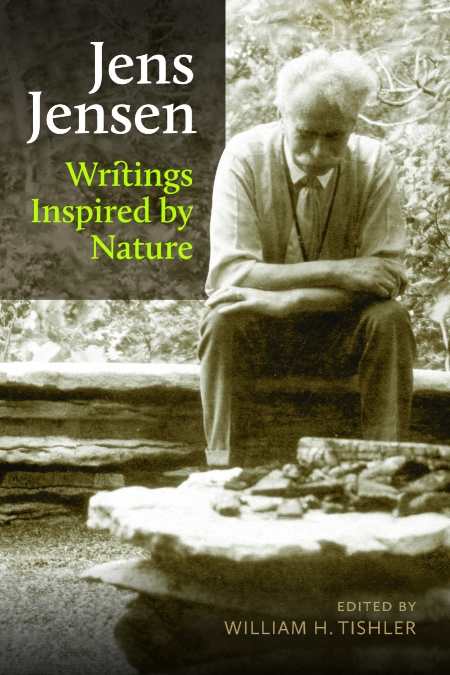Jens Jensen
Writings Inspired by Nature
Jens Jensen (1860-1951) is considered one of America’s most distinguished landscape architects, known for his contributions to both the prairie style of landscape architecture and the land conservation movement. Perhaps best remembered for his establishment of The Clearing, a folk school on Wisconsin’s Door County Peninsula, the legacy of his work is still in evidence throughout the Midwest. Beyond discussing the parks and landscapes that he helped create, his writings provide a window into the personal passions and beliefs that defined Jensen’s long and fruitful career. Editor William H. Tishler, professor emeritus of landscape architecture at the University of Wisconsin-Madison, has assembled Jensen’s lesser known writings from 1901 to 1947 in this collection, shedding additional light on his desire to make a native-based landscape architecture both accessible to and appreciated by the general public.
Born in Denmark, Jensen came to the US at age twenty-four, working on farms in Florida and Iowa before moving to Chicago. Starting as a street sweeper in the Chicago park system, his interest in native plants and love of the Midwest landscape led to his eventual promotion to superintendent of Chicago’s Humboldt Park, and then the entire West Park System in Chicago, before he began a twelve-year career as consulting landscape architect to the park system. He also established his own private practice during this time, designing parks and gardens throughout the Midwest—some for the era’s most prominent citizens. A prolific writer throughout his career, Jensen put forward his visions and opinions in gardening magazines, national newspapers, planning reports, and conservation newsletters, reaching his largest audience in “Natural Parks and Gardens,” a Saturday Evening Post article published in 1930.
Arranged by year, the essays in this collection reveal the evolution of Jensen’s thoughts about landscape design and conservation, while also showing his ever-present skill in describing nature and translating the human need for connection with it. In his 1904 essay “Hawthorns in the Landscape,” he writes, “Beauty and simplicity are inseparable. No June bride was ever more beautifully adorned than the meadows wreathed with the white blossoms of the hawthorn.” His fundamental belief was in a landscape that highlights and echoes the natural features of the environment. Communicating this encompassing vision, he writes in 1927, “Whether we are Wagner or ordinary folks, the outstanding form of beauty and the most accessible to all … is the native landscape. Whatever race, whatever language we speak, our hills, our plains, our little brook and the sweet meadow that skirts it, the solitude of the woods, and the open sea, become a part of our life,” in “Landscape Appreciation.”
Many of the essays in Jens Jensen: Writings Inspired by Nature are short, perfect for quiet contemplation of the wisdom and emotion held within Jensen’s words. While the landscapes most often examined in his writings are those of the upper Midwest, this collection will be of great interest to readers of conservationists such as Aldo Leopold and John Muir, as well as landscape gardeners alike.
Reviewed by
Jennifer Fandel
Disclosure: This article is not an endorsement, but a review. The publisher of this book provided free copies of the book and paid a small fee to have their book reviewed by a professional reviewer. Foreword Reviews and Clarion Reviews make no guarantee that the publisher will receive a positive review. Foreword Magazine, Inc. is disclosing this in accordance with the Federal Trade Commission’s 16 CFR, Part 255.

